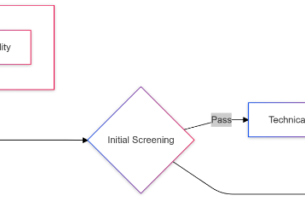Mastering the Accounting Equation: A Comprehensive Guide to Assets, Liabilities, and Equity
Xem thêm : Maximize Your Savings: A Comprehensive Guide to Bank Deposits
In the world of finance and investment, understanding the accounting equation is akin to having a map to hidden treasure. It’s the foundation upon which all financial statements are built, ensuring that your books are balanced and your financial health is accurately reflected. This equation is at the heart of the double-entry bookkeeping system, a method that has been trusted for centuries to maintain the integrity of financial records. In this guide, we’ll delve into what the accounting equation is, its components, how it works within the double-entry system, and why it’s so crucial for any business or investor.
- How to Thrive in Business-to-Government (B2G): A Comprehensive Guide to Winning Lucrative Government Contracts
- How Automatic Stabilizers Protect the Economy: A Guide to Fiscal Policy and Economic Stability
- Boosting Financial Success: The Power and Strategies of Brand Awareness in Finance and Investment
- Mastering a Balanced Investment Strategy: Expert Tips for Optimal Returns
- Maximize Your Investments: How to Ask the Right Financial Questions
What is the Accounting Equation?
The accounting equation is a fundamental concept in accounting that states: Assets = Liabilities + Equity. This simple yet powerful formula encapsulates the relationship between three key elements of a company’s financial position.
– Assets are resources owned or controlled by the business that are expected to generate future economic benefits. Examples include cash, prepaid expenses, equipment, inventory, and buildings.
– Liabilities represent debts or obligations that the business must settle in the future. These can be short-term (like accounts payable) or long-term (such as debt financing).
– Equity, often referred to as shareholders’ equity or owner’s equity, represents the residual interest in assets after deducting liabilities.
For example, if a company has $100,000 in assets and $50,000 in liabilities, its equity would be $50,000 ($100,000 – $50,000).
Components of the Accounting Equation
Assets
Assets are the lifeblood of any business. They can be categorized into several types:
– Fixed Assets: These are long-term assets such as buildings, equipment, and vehicles.
– Financial Assets: These include cash, investments, and accounts receivable.
– Intangible Assets: These are non-physical assets like patents, trademarks, and goodwill.
Common examples of assets include cash in the bank, inventory on shelves, and office equipment.
Liabilities
Liabilities are debts that a company owes to others. They can be divided into two main categories:
– Short-Term Liabilities: These are due within one year and include accounts payable and accrued expenses.
– Long-Term Liabilities: These are due after one year and include debt financing such as loans and bonds.
Examples of liabilities include unpaid bills to suppliers (accounts payable) and salaries owed to employees (accrued expenses).
Equity
Equity represents the ownership interest in a business. It includes several components:
– Paid-In Capital: The amount of money investors have put into the company.
– Retained Earnings: Profits reinvested in the business rather than distributed as dividends.
– Treasury Stock: Shares repurchased by the company from its shareholders.
Equity changes with various transactions such as issuing new shares or distributing dividends.
The Double-Entry Accounting System
The double-entry accounting system ensures that every transaction affects at least two accounts—one account is debited while another is credited. This system maintains the balance of the accounting equation by ensuring that each side of the equation remains equal.
For instance, if a company purchases office supplies for $1,000 using cash:
– The asset account “Cash” would be credited by $1,000 (reducing its balance).
– The asset account “Office Supplies” would be debited by $1,000 (increasing its balance).
This dual effect keeps the accounting equation in balance.
Real-World Examples of the Accounting Equation
Let’s take Exxon Mobil as an example. According to their balance sheet:
– Total Assets might be $300 billion.
– Total Liabilities might be $150 billion.
– Total Equity would then be $150 billion ($300 billion – $150 billion).
This illustrates how real-world companies use the accounting equation to ensure their financial statements are accurate and balanced.
Calculating the Accounting Equation
To calculate the accounting equation using a company’s balance sheet:
1. Locate the total value of Assets.
2. Locate the total value of Liabilities.
3. Subtract total liabilities from total assets to find Equity.
For example:
– If Total Assets = $200,000
– And Total Liabilities = $100,000
– Then Equity = $200,000 – $100,000 = $100,000
Importance of the Accounting Equation
The accounting equation is crucial for several reasons:
– It ensures financial reporting accuracy by maintaining balanced financial statements.
– It reflects the financial health and position of a company at any given time.
– It helps investors and analysts assess a company’s solvency and profitability.
Nguồn: https://gapinsurance.click
Danh mục: Blog




